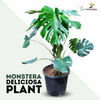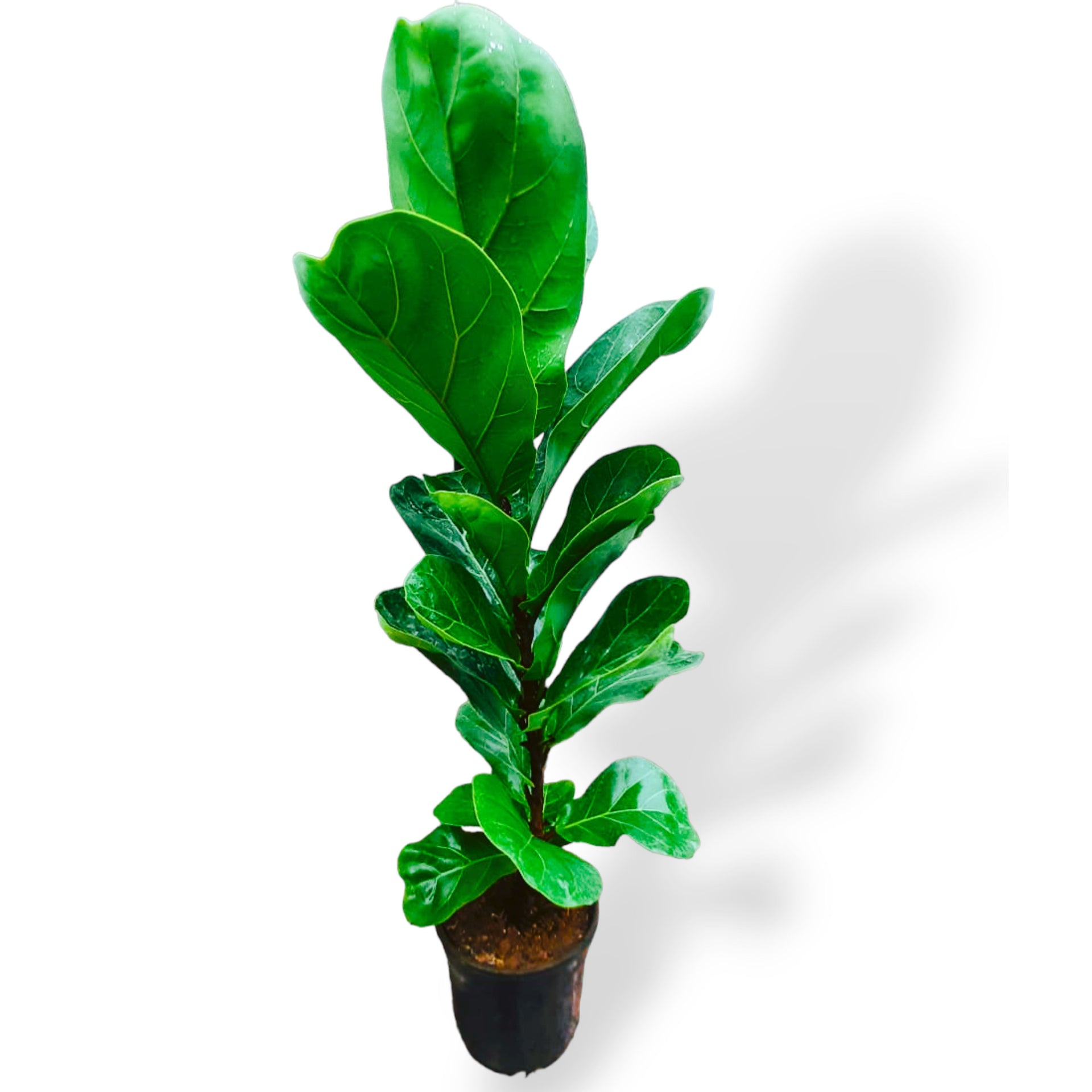
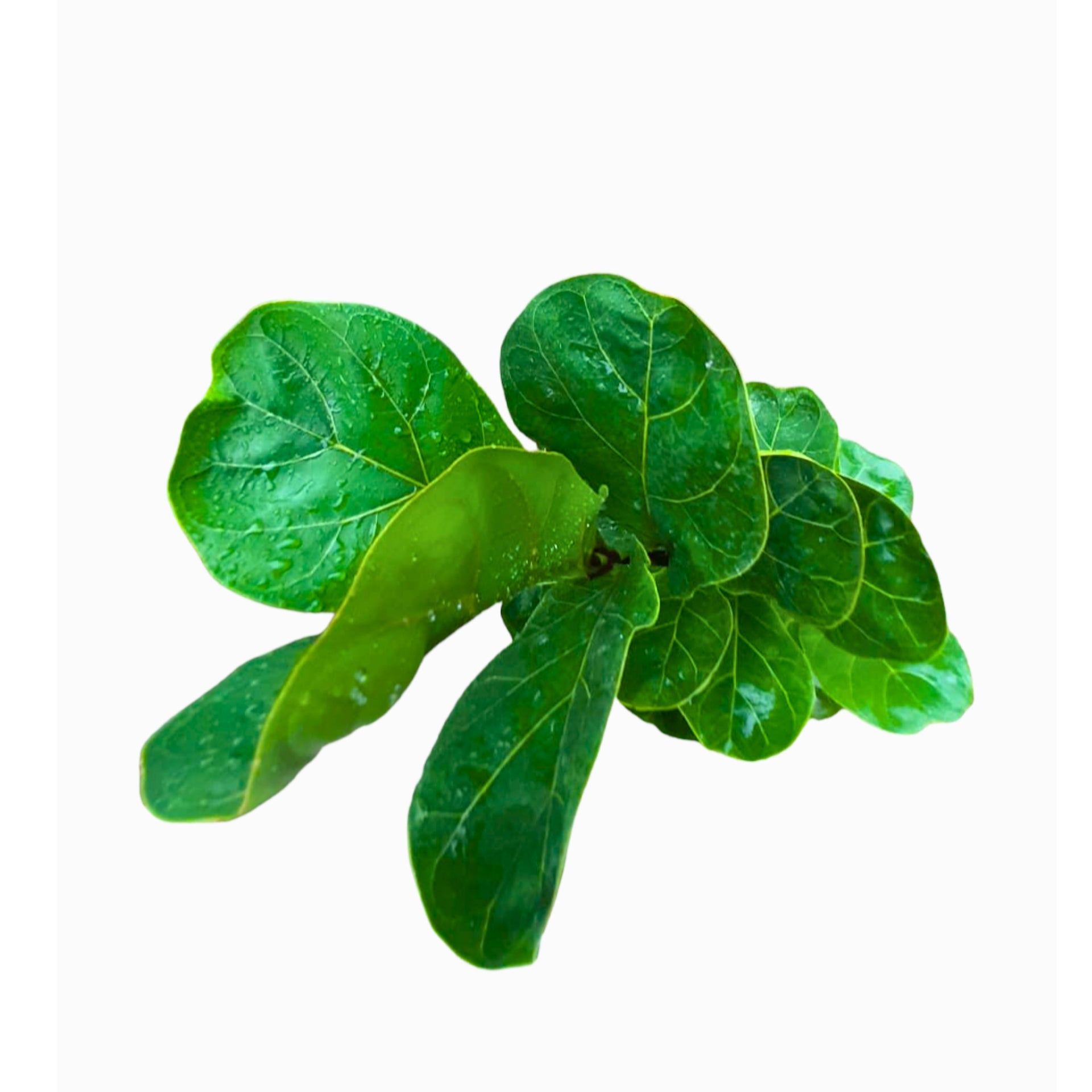
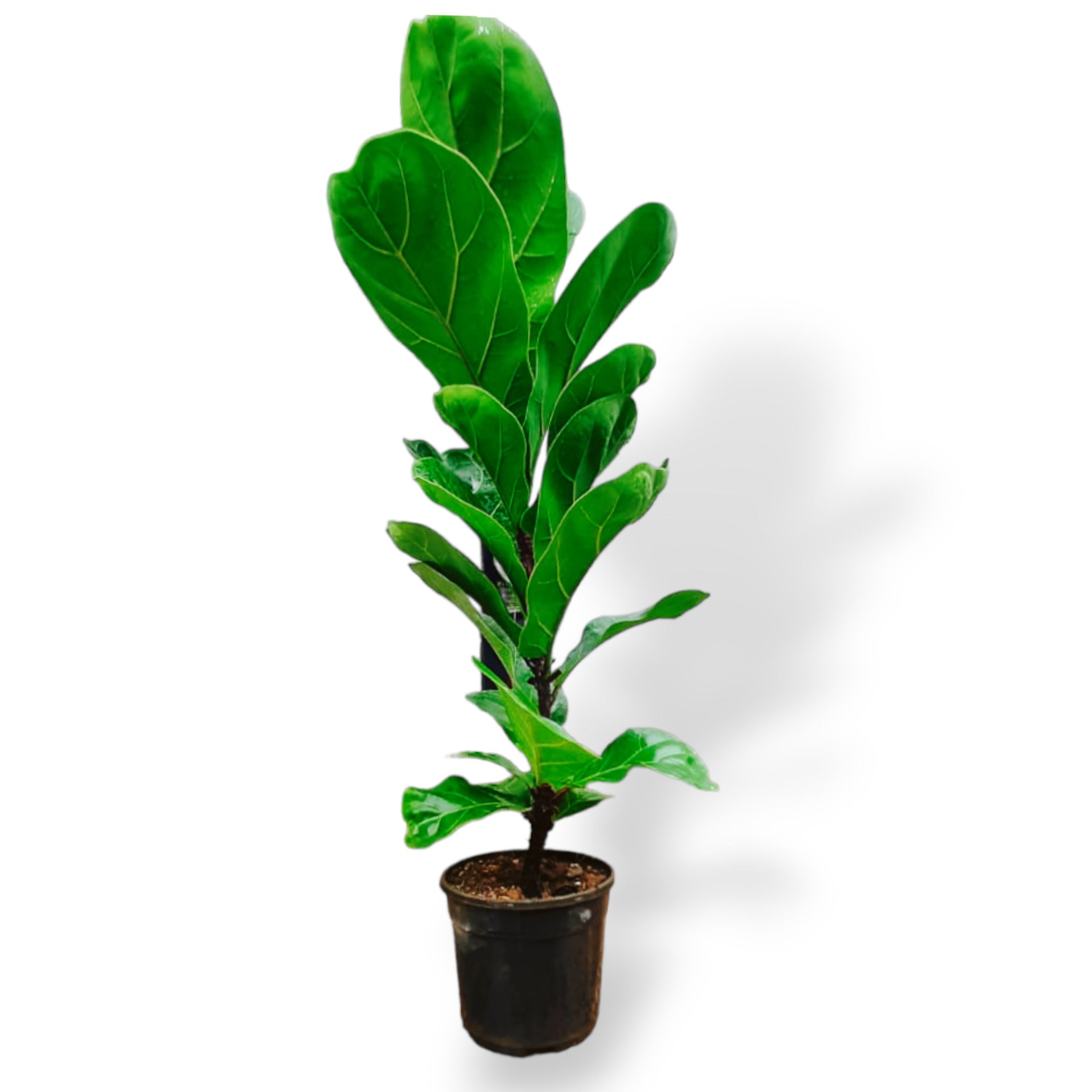
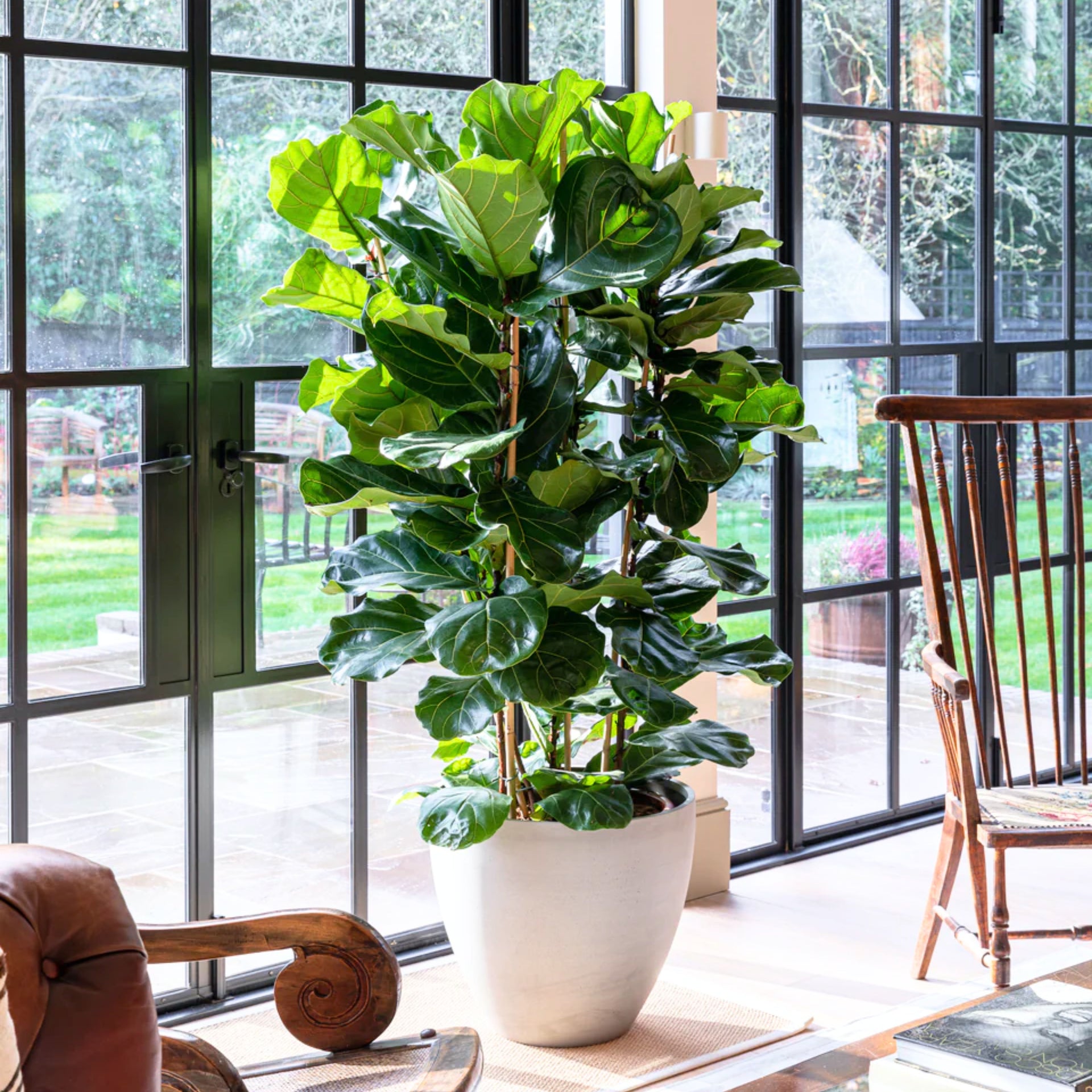
Green Paradise Ficus Lyrata Plant Fiddle Leaf Fig Live Plant
Guaranteed Safe Checkout
Ficus Lyrata: The Majestic Fiddle Leaf Fig
Plant
Ficus lyrata, commonly known as the Fiddle Leaf Fig, is a stunning and popular houseplant that has taken the world of interior decor by storm. With its large, glossy leaves and elegant silhouette, the Fiddle Leaf Fig has become a symbol of sophistication and natural beauty in homes and offices worldwide. In this article, we will delve into the fascinating world of Ficus lyrata, exploring its origins, care requirements, and the unique charm it brings to indoor spaces.
Origins and Botanical Features
- Native to the tropical rainforests of West Africa, specifically in countries like Sierra Leone, Cameroon, and Liberia, Ficus lyrata is a member of the Moraceae family.
- In its natural habitat, this plant can grow up to 40 feet tall, but when cultivated as a houseplant, it typically reaches a more manageable height of around 6 feet.
- Its most distinguishing feature is its striking, violin-shaped leaves that can grow up to 15 inches in length and 10 inches in width.
- These large, leathery leaves are a vibrant dark green, making the Fiddle Leaf Fig a striking addition to any indoor space.
Aesthetic Appeal:
- One of the primary reasons for the Fiddle Leaf Fig's popularity is its aesthetic appeal.
- The broad, glossy leaves add a touch of elegance and a tropical feel to any room.
- Its sculptural quality makes it an instant conversation starter and a favorite among interior designers.
Air Purification:
- Like many other houseplants, Ficus lyrata contributes to improving indoor air quality by removing toxins such as formaldehyde and benzene from the air.
- Its large leaves provide a substantial surface area for this air-purifying process.
Easy Maintenance:
- While Ficus lyrata may seem like a high-maintenance plant, it's relatively easy to care for with the right knowledge.
- With proper watering and lighting, it can thrive indoors for many years.
Caring for Your Ficus Lyrata
Here are some essential care tips to ensure your Fiddle Leaf Fig flourishes:
Light:
These plants thrive in bright, indirect sunlight. Place them near a north or east-facing window, but avoid direct sunlight, which can scorch their leaves.
watering:
wait until the top inch of the soil has dried off. It's better to underwater than overwater, as Ficus lyrata is susceptible to root rot.
Humidity:
Ficus lyrata prefers higher humidity levels. Regularly misting the leaves or placing a tray of water near the plant can help maintain the humidity it craves.
Repotting:
As your plant grows, consider repotting it every 2-3 years to provide more space for its roots.
Pruning:
Prune your Fiddle Leaf Fig to maintain its shape and encourage bushier growth.
Fertilizing:
During the growing season (spring and summer), feed your plant with a balanced, water-soluble fertilizer once a month.
Common Challenges
While Ficus lyrata is relatively low-maintenance, it's not without its challenges.
Some common issues include:
Brown Spots:
Brown spots on the leaves can be a sign of overwatering or inadequate drainage.
Leaf Drop:
Sudden leaf drop is often due to changes in light, temperature, or watering. It's normal for older leaves to drop as the plant grows new ones.
Pests:
Watch out for pests like mealybugs and spider mites, which can infest Ficus lyrata. Check your plant frequently for pest activity.
Unlocking the Beauty: A Guide on How to Grow Ficus
Lyrata (Fiddle Leaf Fig) Plants
The Ficus lyrata, commonly known as the Fiddle Leaf Fig, is a striking and popular houseplant cherished for its lush, violin-shaped leaves and its ability to transform any space into a green oasis. Native to western Africa, particularly in regions like Sierra Leone and Cameroon, this plant has gained a global following among plant enthusiasts and interior decorators alike. Growing a Ficus lyrata successfully requires a bit of patience and attention, but the rewards are well worth it. In this guide, we will walk you through the essential steps to cultivate a thriving Ficus lyrata plant.
Choosing the Right Location
One of the first considerations when growing a Fiddle Leaf Fig is selecting the perfect spot. These plants are native to tropical rainforests, so they thrive in conditions that mimic their natural habitat. The following are some essential considerations.
Indirect Sunlight:
Ficus lyrata plants need bright, indirect light. Place them near a window with filtered sunlight or use sheer curtains to diffuse harsh rays. Avoid the sun's rays; they can burn the foliage.
Consistent Temperature:
These plants prefer a stable temperature range. Avoid placing them near drafts, heaters, or air exertion reflections. Ideal indoor temperatures range from 65 to 75 degrees Fahrenheit (18 to 24 degrees Celsius).
Humidity:
Fiddle Leaf Figs love humidity. You can increase moisture by befogging the leaves regularly or placing a charger of water near the Plant. Alternatively, consider using a humidifier.
Choosing the Right Pot and Soil
Selecting the right container and soil mix is crucial for your Ficus lyrata's health and growth:
Pot:
Ensure your pot has drainage holes to prevent waterlogging. A slightly larger pot than the current one is suitable, as these plants like to have a little room to grow.
Soil:
Use a well-draining potting mix with a good balance of organic matter. Adding perlite or orchid dinghy can ameliorate drainage.
Watering Your Fiddle Leaf Fig
Overwatering is a common mistake when caring for Ficus lyrata.
Follow these guidelines to water your plant effectively:
Allow the Top Inch of Soil to Dry:
Stick your finger into the soil about an inch deep. If it feels dry, it's time to water. If it's still moist, wait a few more days.
Water Thoroughly:
When it's time to water, do so thoroughly until you see water draining from the pot's bottom. Empty the saucer beneath the pot to prevent root rot.
Establish a Schedule:
Consistency is key. Aim to water your Fiddle Leaf Fig once every 1-2 weeks, but adjust this based on your specific indoor conditions.
Fertilizing
To encourage growth and maintain the beauty of your Ficus lyrata, fertilize it during the growing season (spring and summer) with a balanced liquid fertilizer diluted to half strength. Fertilize once a month, and avoid over-fertilization, which can harm the plant.
Pruning and Maintenance
Regular maintenance is essential for a healthy and aesthetically pleasing Ficus lyrata:
Pruning:
Trim any damaged or dead leaves to encourage new growth and maintain its shape. To produce fine cuts, use shears that are clean and sharp.
drawing Wipe the leaves with a damp cloth to remove dust.
Dealing with Common Issues
Fiddle Leaf Figs are generally hardy, but they can face a few challenges:
Pests:
Watch for pests like mealybugs and spider mites. Treat them with insecticidal cleaner or neem oil painting.
Yellowing Leaves Yellowing leaves can indicate overwatering or poor drainage.Adjust your watering routine and check the pot and soil.
- Growing a Ficus lyrata can be a rewarding experience, bringing a touch of the tropics into your home.
- Remember that every plant is unique, so it might take some time to understand your Fiddle Leaf Fig's specific needs.
- With patience and care, you can enjoy the beauty of this striking plant for years to come.


